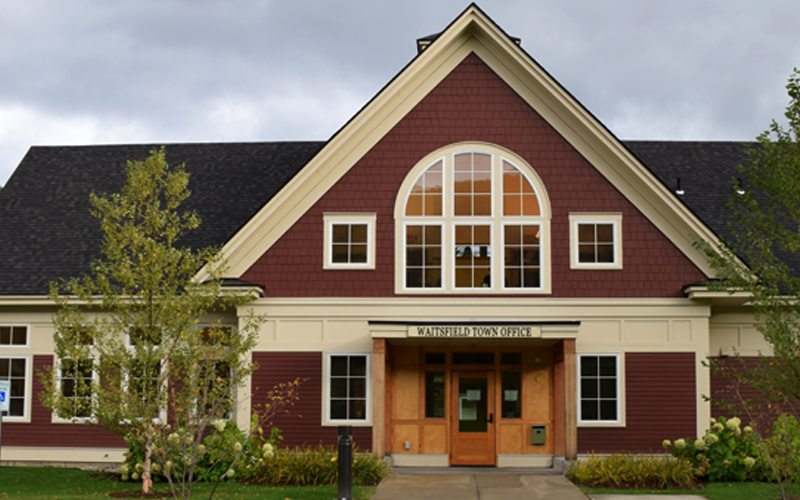Waitsfield’s wastewater and water feasibility study is at 60% completion and the select board is considering a plan for public outreach about the findings and what they might mean for increasing housing and infill development in the study area.
The study focuses on existing and potential water and wastewater in the Waitsfield Village, Irasville and land as far north as the town gravel pit and as far south as land to the south of Kingsbury Road.
The study is being conducted by Dubois and King and is completely funded by grants.
The study analyzes existing water and wastewater systems, public, private and shared, assessing existing capacity, potential for increased capacity and the impact of eliminating well shields by adding more parcels to the town’s municipal water system.
For example, in the study were there are 575 acres of which 54.5 are needed for well-shields. Eliminating the well-shields on as little as 5% of that land would free up wastewater capacity for 96,000 gallons per day of wastewater which is enough to accommodate 230 homes.
OPTIONS
The 60% report details six options for the town going forward. Option one calls for the town to do nothing and wastewater would continue to be managed privately.
Option two calls for the town to try to connect properties within the town’s municipal water system service area to the water system. That would free up land currently being used for well-shields for wastewater. Property owners would have the ability to replace or expand their septic systems and could also provide the infrastructure for infill development.
The third option outlined in the draft is to work to increase capacity at existing leachfields where there are well suited soils either by increasing the size/area or adding pre-treatment options. The fourth option calls for the town to develop community wastewater systems on one or more different sites. The town-owned Munn field on Route 100 just north of Kingsbury Road is one such site.
In 2008, town voters rejected a plan to develop town wastewater on that property and the town has since created a revolving loan fund that has funded five state certified wastewater systems/system upgrades in the town, including one for Lawson’s Finest and one at Localfolk Smokehouse.
The fifth option includes managing the existing state permitted systems to increase capacity and reduce the size and cost of new wastewater treatment and disposal systems. The sixth option calls for some combination of options two through five.
DRAFT OUTREACH PLAN
The town’s Water and Wastewater Committee shared a draft public outreach plan for the study with the select board at the board’s September 26 meeting. The draft outreach plan includes goals, key messaging strategies, identifies stakeholder groups and outreach strategies. It also includes a timeline.
Educating the community about the benefits of community wastewater and water solutions, including opportunities for residential growth and commercial development is one of the goals. That issue – increasing residential growth and commercial development is also part of the messaging strategy as well. Another key message is that many existing private wastewater and water systems in the study area are gaining and may soon fail so connecting to municipal services may be more cost effective and predictable.
Increasing people’s ability to try different uses on their properties is also an important message. Community wastewater and water infrastructure provides commercial and economic development opportunity in the study area by providing more freedom to business and property owners when changing uses or modifying spaces.
The outreach subcommittee, which includes Waitsfield town administrator Annie Decker-Dell’Isola, Amy Tomasso, community planner at the Mad River Valley Planning District, and planning commissioner AnnMarie Harmon, plan to use brochures, posters, infographics, articles in The Valley Reporter, Mad River Valley Television interviews, radio interviews, newsletters, advertisements, state marketing resources and special events to get the word out. The subcommittee is working on a time line for public outreach which reflects the current state of completion as well as when the report is completed. The report will be completed this fall.













